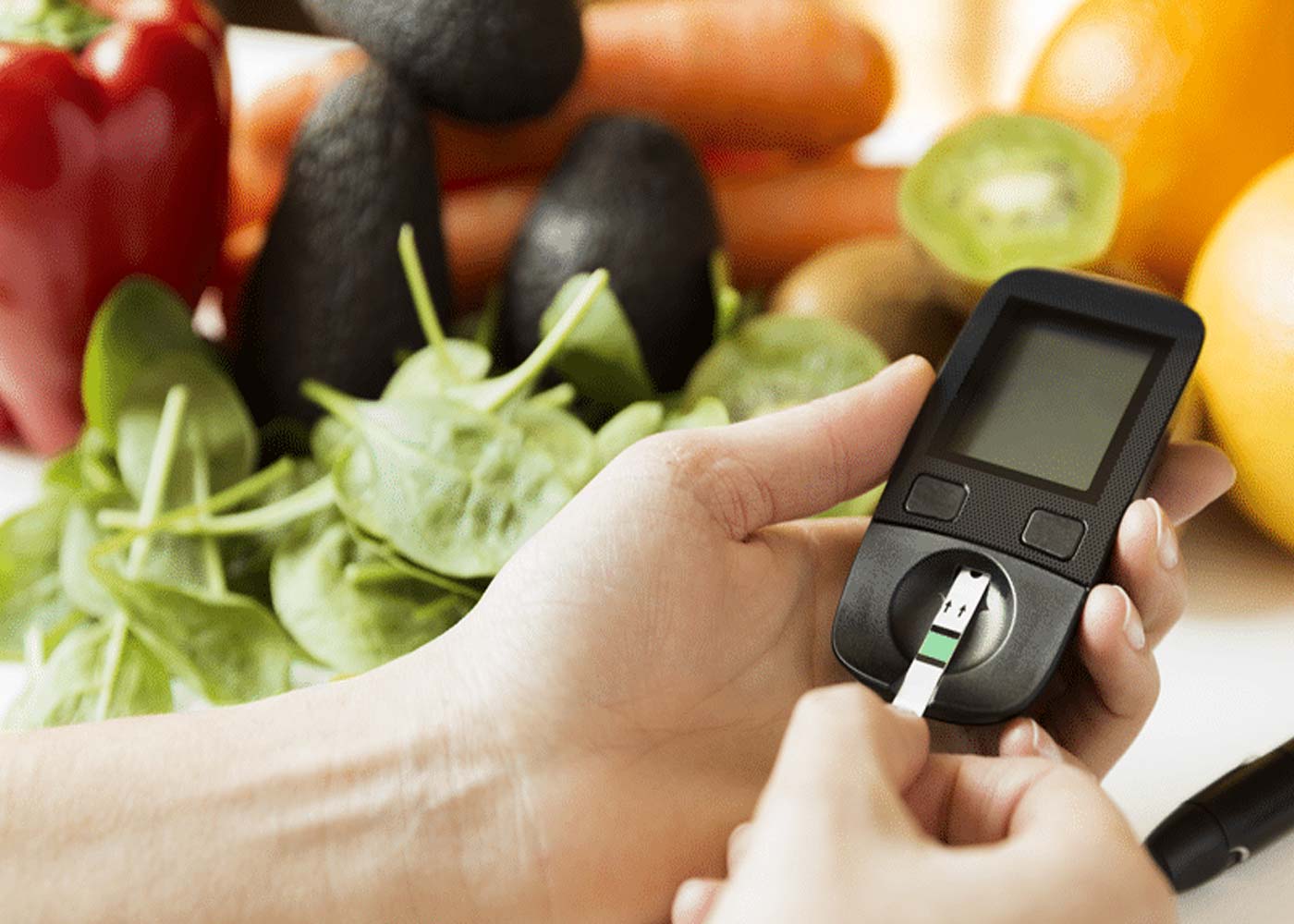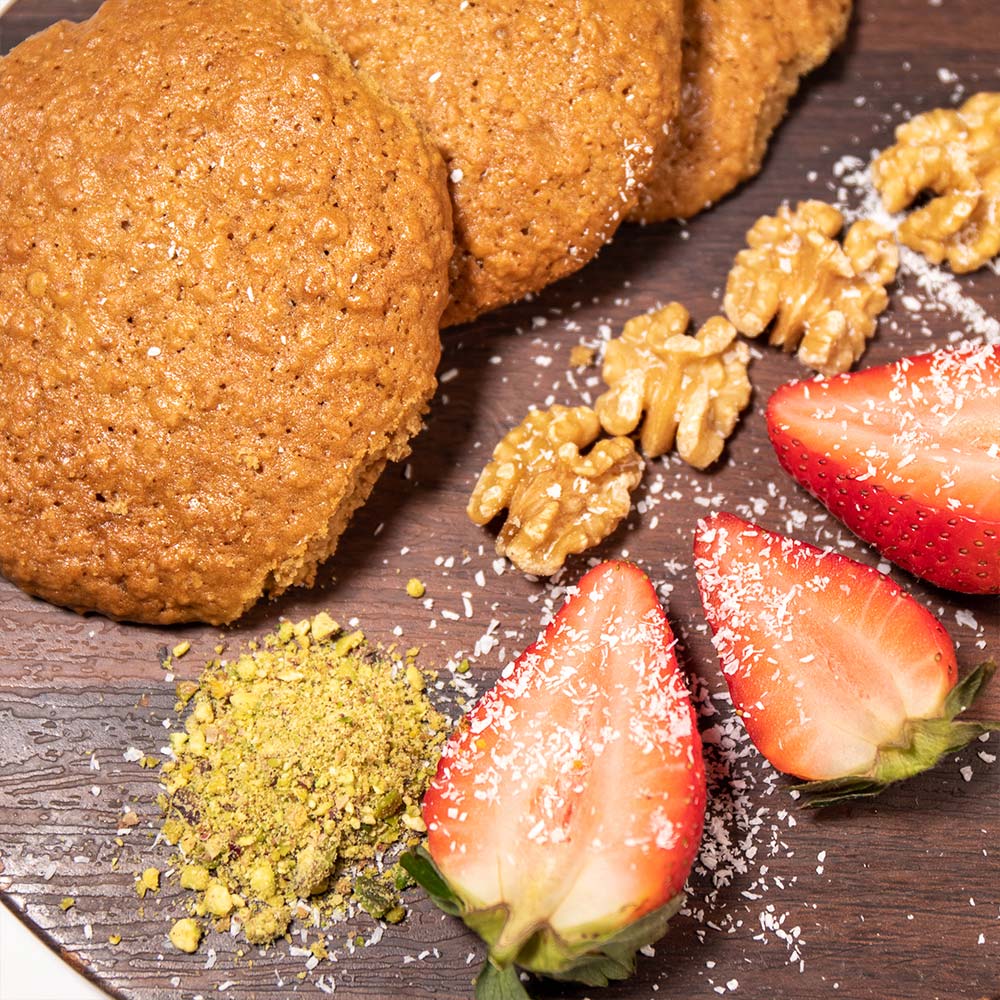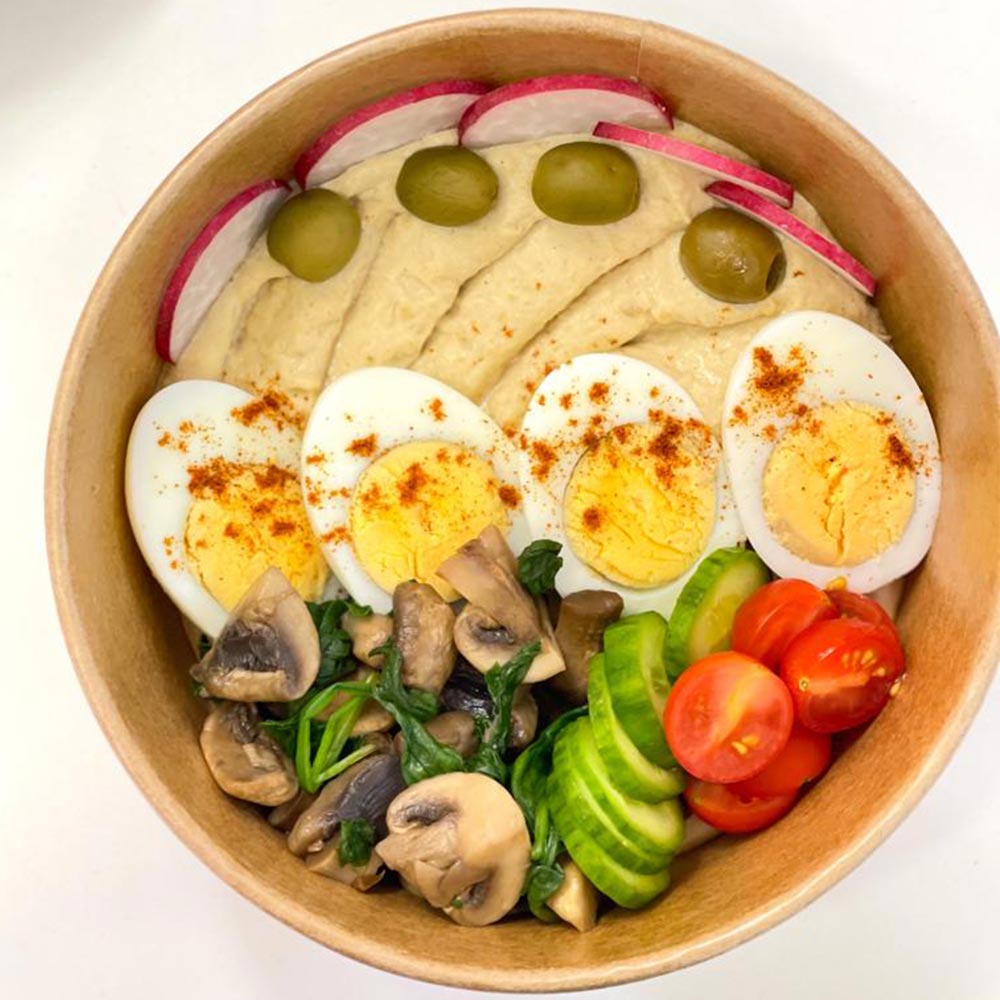It can be emotionally taxing to go from receiving a pre-diabetes diagnosis to properly controlling it. But do not worry with the correct information and a sensible eating schedule, with Energy Meal Plans 1-Week pre-diabetic diet you can take control of your health and halt the development of type 2 diabetes. We'll cover all you need to know about the ideal one-week pre-diabetic meal plan, empowering you to make wise decisions and meet your health objectives.
What is Pre-Diabetes?
Blood sugar levels that are higher than usual but not yet high enough to be categorized as type 2 diabetes are said to have pre-diabetes. It acts as a warning indicator, showing that action is needed to stop the development of diabetes. It is crucial to treat both the physical and mental elements of pre-diabetes since it is frequently accompanied by emotional stress and anxiety.
Blood tests like the oral glucose tolerance test (OGTT) and fasting plasma glucose (FPG) are commonly used to determine it. Pre-diabetes is indicated by fasting plasma glucose levels between 100 and 125 mg/dL.
The Importance of a Pre-Diabetic Meal Plan
In order to control blood sugar levels, encourage weight reduction, and lower the chance of developing type 2 diabetes, a pre-diabetic food plan is essential. It gives you structure, direction, and control over your dietary decisions, ensuring that your body gets the proper nutrients in the appropriate amounts.
The Effects of Pre-Diabetes on the Mind
Pre-diabetes can cause a variety of feelings, such as dread, anxiety, and irritation. It's typical to feel overburdened and unsure of the future. Pre-diabetes may, however, be properly treated with the appropriate strategy, giving you the power to take charge of your health and enhance your general well-being.
Risk factors
Pre-diabetes is more likely to occur in people who are obese, have sedentary lifestyles, have a family history of the disease, have high blood pressure, or come from specific ethnic origins. Making educated judgments regarding diet and lifestyle modifications might be aided by being aware of these risk factors.
A 1-Week Pre-Diabetic Meal Plan's Advantages
keeping Blood Sugar Levels Steady
The balance of carbs, proteins, and fats in a well-crafted pre-diabetic diet plan helps to regulate blood sugar levels. Avoiding blood sugar spikes and drops will help you feel better overall by preventing energy slumps and mood changes.
Encourages Weight Loss
In order to manage pre-diabetes, it's important to maintain a healthy weight. A one-week pre-diabetic meal plan can help you with portion management and direct you toward meals that are high in nutrients yet low in calories. You may generate a calorie deficit and lose weight gradually and sustainably by including whole grains, lean meats, fruits, and vegetables in your diet.
Increased Energy Levels
Your energy levels are more constant throughout the day when your blood sugar is steady. By combining complex carbs, lean proteins, and healthy fats in your diet, a pre-diabetic meal plan may provide you a continuous flow of energy and keep you feeling alert and focused.
Lowering the Danger of Type 2 Diabetes
Pre-diabetes is frequently seen as a type 2 diabetes warning indication. A 1-week pre-diabetic eating plan can help you greatly lower your chances of developing type 2 diabetes. You may maintain a healthier lifestyle and avert any health issues by using this proactive approach.
Enhancing General Wellbeing and Health
A well-rounded pre-diabetic food plan helps not just blood sugar control but also general health and wellbeing. You provide your body the vital vitamins, minerals, and antioxidants it needs by include a range of nutrient-rich foods in your diet. This can promote healthy organ function, strengthen your immune system, and enhance digestion.

Making a Successful One-Week Pre-Diabetic Meal Plan
Getting Advice from a Healthcare Provider
It is crucial to speak with a healthcare provider prior to starting a pre-diabetic food plan. They will evaluate your particular requirements, make tailored recommendations, and take care of any queries you may have. A healthcare practitioner can assist you in developing a personalized food plan that fits your tastes and way of life.
Creating Unique Objectives
An effective pre-diabetic food plan includes setting personal goals. It aids in maintaining your drive and attention on your path. Whether your objectives are to lose weight, control your blood sugar, or engage in greater physical exercise, breaking things down into small steps will help you succeed.
Planning Meals and Snacks
Careful preparation of meals and snacks is required for a one-week pre-diabetic meal plan in order to guarantee an equal amount of nutrients throughout the day. A mix of complete grains, lean proteins, fruits, veggies, and healthy fats should all be included. This kind offers a wide range of crucial nutrients in addition to improving taste.
Including a Range of Foods that are High in Nutrients
It's critical to incorporate a range of nutrient-rich meals in your pre-diabetic diet plan in order to satisfy your body's nutritional requirements. Fiber, vitamins, and minerals are all present in whole grains like quinoa and brown rice. Skinless chicken and fish are examples of lean proteins that provide vital amino acids. A wide variety of vitamins, minerals, and antioxidants are present in fruits and vegetables.
Managing portion sizes
Controlling portions is essential for controlling pre-diabetes. Overeating is avoided and calorie intake is controlled. To help with portion management, use measuring cups, a food scale, or visual clues. In order to avoid consuming too many calories, it's also crucial to learn to pay attention to your body's hunger and fullness signals.
Including Consistent Exercise
A pre-diabetic food plan benefits from physical exercise, which also improves general health. Regular exercise lowers the chance of developing type 2 diabetes, increases insulin sensitivity, and aids in weight management. Aim for strength training twice per week and at least 150 minutes of aerobic exercise with moderate intensity per week.

when a 1-Week Pre-Diabetic Eating Plan is Needed
Blood glucose levels that are higher than usual but not high enough to be categorized as type 2 diabetes are referred to as pre-diabetes. If the proper steps are not done, it is a warning indication that you are at danger of acquiring diabetes. In order to control your health and stop the development of diabetes, you may need to take into account a 1-week pre-diabetic diet plan if you have been exhibiting specific indications and symptoms. The symptoms of pre-diabetes, the significance of a pre-diabetic meal plan, and how to make one that works for you are all covered in this article.
Unexplained Weight Loss
Unexpected weight loss is one indication that you might require a 1-week pre-diabetic food plan. If you have been losing weight without making any deliberate dietary or exercise adjustments, it can be because your body is not able to use glucose as it should. Your body may burn down fat for energy when your blood sugar is high, which might result in weight loss. It's crucial to speak with a medical practitioner and think about establishing a pre-diabetic food plan if you've lost a lot of weight unintentionally.
Urinating Frequently
Another sign of pre-diabetes that is frequently present is frequent urination, usually referred to as polyuria. The kidneys strive to eliminate extra glucose by excreting it in urine when blood sugar levels are high. This may lead to more frequent urination. You should follow a pre-diabetic eating plan if you discover that you need to use the toilet more frequently than normal, especially at night. This might be an indication of pre-diabetes.
Constant Thirst
Frequent urination and excessive thirst, often known as polydipsia, might be closely associated. The body tries to make up for the water loss by making you thirstier when you urinate more frequently. Your body may be having trouble controlling blood sugar levels if you find yourself thirsty or reaching for a glass of water frequently. Consider a pre-diabetic meal plan in order to treat this symptom.
Weakness and Exhaustion
Due to the body's cells using glucose inefficiently, pre-diabetes might make you feel weak and exhausted. The cells may not receive an appropriate energy supply when blood sugar levels are high, resulting in fatigue and weakness. In order to improve your energy levels and general wellbeing, it is worthwhile to consider a 1-week pre-diabetic diet plan if you have been going for extended periods of time feeling exhausted despite getting enough rest.
Blurred Vision
Pre-diabetics may have blurred vision as a sign of their condition because of the harm that elevated blood sugar levels do to the lenses in their eyes. The lenses may enlarge as a result of high glucose levels, impairing vision. It's important to visit an eye doctor if you've observed changes in your vision, such as hazy or distorted vision, and to address the underlying pre-diabetic condition with an appropriate eating plan.
A better lifestyle can be started by being aware of the pre-diabetes symptoms and indicators. It is advised to speak with a healthcare provider if you have noticed any of these symptoms so they can evaluate your situation and offer pertinent advice. Implementing a 1-week pre-diabetic meal plan will help you manage your pre-diabetes and lower your chance of developing type 2 diabetes in addition to following medical recommendations.

Foods to avoid
Insulin resistance is the main factor causing pre-diabetes. This implies that insulin, a hormone that aids in your cells' ability to utilize blood sugar as energy, is no longer effectively reacted to by your body. Your pancreas then begins to produce more insulin to encourage cell response, which ultimately causes a spike in blood sugar.
Because diets that are heavy in carbs but poor in fiber and protein can cause blood sugar levels to surge and the pancreas to experience additional stress, ultra-processed foods are linked to insulin resistance and diabetes. But more than simply these simple carbohydrates are at fault.
Sodium has been related to a higher risk of developing diabetes, and some processed meals heavy in saturated fat have been associated to increased insulin resistance.
It's also important to keep in mind that eating foods that have undergone extreme processing increases your chance of being overweight and obese, which is one of the main risk factors for developing pre-diabetes.
In light of this, it is advised that you stay away from the following items while following a diet for pre-diabetics:
1. White flour-based packaged cookies, crackers, and pastries, as well as refined grains like white bread, pasta, and rice.
2. Meats that have been processed, such as beef jerky, bacon, hot dogs, salami, and pepperoni.
3. Breakfast cereals enriched with sugar.
4. Drinks with added sugar, such as sports drinks, fruit juice, soda, and iced tea.
5. Alcoholic drinks, particularly sweet cocktails.
6. Jams, jellies, and yogurts sweetened with sugar.
7. Sugar-sweetened energy, granola, and snack bars.
8. Salty nibbles like pretzels and potato chips.
9. Candy.
Vegetables with less carbohydrates
Naturally, this is not a complete list of all low-carb veggies; thus, if your favorite vegetable isn't included, you should determine how many carbohydrates it contains on your own (for most vegetables, simple Google searches will do).
1. Asparagus
2. Bamboo shoots
3. Bok Choy
4. Arugula
5. Broccoli
6. Cabbage
7. Celery
8. Cucumber
9. Eggplant (aubergine)
10. Fennel
11. Cauliflower
12. Kale
13. Leeks
14. Lettuce (all sorts)
15. Peppers
16. Pumpkin
17. Radish
18. Spinach
19. Mushrooms
20. Tomato
21. Watercress
22. Zucchini (Courgette)

When is Sugar too Much?
The majority of Americans eat more sugar than they should, which is a known risk factor for pre-diabetes and an essential indicator of blood sugar levels. Sugar may be found in processed foods including morning cereals, frozen dinners, snacks, sauces, and dressings as well as less visible areas like these.
While your body needs some sugar to operate, too much might exacerbate pre-diabetes. The preferred chemical for supplying the brain with energy is glucose, or blood sugar. Carbohydrates are a key source of energy. However, consuming too many refined carbs from added sugar might have a negative impact on your health.
1-Week Pre-Diabetic Meal Plan
Before you begin, consider these points:
1. Be sure to hydrate yourself throughout the day. Aim for 64 ounces or more.
2. The meal plan's suggested serving sizes are for one person, but you may prepare larger quantities if you want leftovers or to accommodate a larger family.
3. If your healthcare physician approves, include some physical exercise. At least 150 minutes each week is a good target for the majority of folks.
Most crucial, discuss any health problems you may have with your doctor before beginning any new workout or eating regimen.
Day 1:
For Breakfast: Omelet with spinach and mushrooms and whole wheat bread.
For Lunch: Salad of grilled chicken with mixed vegetables and balsamic dressing.
For Dinner: Sweet potatoes, steamed broccoli, and baked chicken breast.
Day 2:
For Breakfast: Greek yogurt with a mixture of berries and almonds.
For Lunch: roasted veggies in a dish of quinoa and black beans
For Dinner: quinoa with grilled asparagus with grilled shrimp
Day 3:
For Breakfast: Avocado toast with sliced tomatoes on the side.
For Lunch: Lettuce wraps with turkey, avocado and salsa.
For Dinner: Turkey meatballs over whole-wheat pasta with marinara.
Day 4:
For Breakfast: A whole grain muffin and a vegetable and egg scramble.
For Lunch: will be lentil soup and a mixed green salad.
For Dinner: quinoa-based salmon bake with sautéed spinach
Day 5:
For Breakfast: Overnight oatmeal with chia seeds and fruit from the garden.
For Lunch: Quinoa and steamed veggies Grilled salmon.
For Dinner: Tofu stir-fried with a variety of veggies and brown rice.
Day 6:
For Breakfast: A vegetable frittata with whole grain bread.
For Lunch: A chickpea salad with feta cheese, cherry tomatoes, and cucumbers.
For Dinner: Quinoa, roasted Brussels sprouts, and grilled chicken breast.
Day 7:
For Breakfast: A quinoa breakfast dish with almonds and dried fruit.
For Lunch: Lean turkey, hummus, and veggies in a whole grain wrap.
For dinner: Steamed cauliflower and brown rice with lentil curry.

Ideas for Snacks
1. Homemade trail mixes with dried fruits and nuts.
2. Greek yogurt with almond slices, honey, and a drizzle.
3. Fresh berries and cottage cheese.
4. Hummus with carrot sticks.
5. cooked eggs.
6. A slice of fruit and a handful of almonds.
Foods to Consume Cautiously
The majority of your calories should come from nutritious foods like vegetables, legumes, whole grains, nuts, and lean meats, according to Chan, but you may still indulge yourself once in a while.
The healthful snacks listed below are ones that you can sometimes enjoy on a pre-diabetic diet:
1. Dark chocolate (70% cocoa content or more) dipped with strawberries or cherries
Brownies with black beans
3. Nuts, seeds, and dried fruit-based homemade granola
4. Almond flour cookies or arrowroot cookies
5. Greek yogurt with vanilla and cinnamon on top of baked apples
6. Banana "ice cream" produced with only one ingredient and mixed into a frozen state with chopped almonds on top.
7. Frozen yogurt with shredded coconut and a variety of fruit
Your doctor or nutritionist can advise you on how frequently you can indulge in these sweets, but as a general rule, aim to keep your daily intake of calories from sugar to less than 5%. In other words, that would be 25 grams of sugar for a 2,000 calorie diet.
Emotional Support
Managing Fear and Anxiety
Anxiety and future concern can be brought on by pre-diabetes. It's critical to recognize and deal with these feelings. Deep breathing exercises and meditation are relaxation practices that can help lower stress and improve emotional wellbeing. Getting professional assistance, such as counseling or therapy, can be helpful in controlling the worry and anxiety related to pre-diabetes.
Requesting the Help of Loved Ones
Sharing your worries, anxieties, and accomplishments with a dependable friend or relative might help you feel better emotionally. Your trip may be easier to handle and less lonely with their support and empathy.
Joining Support Organizations
Consider participating in online forums or support groups designed especially for people with pre-diabetes. It may be quite beneficial to share experiences, get new perspectives, and get support from those who recognize your challenges. These groups offer a secure setting where people can talk openly about problems, exchange advice and commemorate achievements.
Exercise of Self-Care
It's crucial to look after your physical and mental needs when managing pre-diabetes. Try to relax and have fun by doing things like reading, listening to music, doing yoga, or taking walks in the park. Setting self-care as a priority may lower stress and enhance general wellbeing.
Reversing Pre-Diabetes
People with pre-diabetes may take control of their health by adopting more physical exercise and changing to well-balanced meals full in wholesome, fiber-rich foods.
The incorporation of healthy eating habits, weight loss, and increased physical exercise can reduce your chance of getting type 2 diabetes, according to several research studies. In addition, studies have shown that moderate weight loss as a consequence of lifestyle modifications can postpone the onset of type 2 diabetes by 34% over a period of four years when compared to a placebo.
1. Be Active
Diabetes may be prevented by physical activity, which also benefits heart health. People with pre-diabetes are advised to strive for 10,000 steps per day or at least 150 minutes of moderate to strenuous activity each week. Before beginning an exercise regimen or increasing your existing level of physical activity, make sure to see your doctor.
2. Reduce your weight
Men and women should work to reach and maintain a body mass index of 25 or below to prevent type 2 diabetes. For women, the ideal waist circumference is 35 inches, while for men it should be 40 inches.
Losing even a little weight might be advantageous. A moderate rate decrease of 5% to 10% of your body weight, according to the ADA, will dramatically lower your A1C level. A weight loss of 10 to 20 pounds might be significant for a 200-pound person.
3. Get Adequate Rest
It's critical to comprehend how sleep, diabetes, and weight growth are related. People's desires for sweet meals have been proven to rise when they are sleep deprived. Make sure you obtain seven to eight hours of sleep each night if you have pre-diabetes.
4. Limit your alcohol intake and do not smoke
These lifestyle choices can dramatically reduce your chance of developing a number of chronic illnesses, such as type 2 diabetes, heart disease, vascular issues, and metabolic syndrome.
5. Keep track of your statistics
Pre-diabetic patients should keep an eye on the outcomes of their laboratory tests. ABCs (A1C, blood pressure, and cholesterol). And if you have pre-diabetes or are at risk for developing it, make sure you have a blood test to check your A1C level at least once a year.
Conclusion
Pre-diabetes management entails more than just sticking to a food plan. It demands a holistic strategy that takes into account both the condition's physical and emotional components. You may stabilize blood sugar levels, encourage weight reduction, boost energy levels, and lower your chance of developing type 2 diabetes by following a well-designed 1-week pre-diabetic food plan. Always seek medical advice, make individualized objectives, and take care of yourself. You can take charge of your health and have a full life with the correct support and dedication.






























